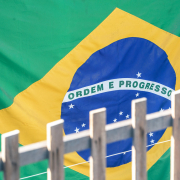A partial ban on chlorpyrifos would be paired with more money to train pesticide applicators and help growers find alternatives to the widely used but besieged chemical, under a bill passed Monday by the Washington Senate.
The bill’s prime sponsor, Bainbridge Island Democrat Christine Rolfes, acknowledged giving up chlorpyrifos would be hard for some farmers.
“I know this isn’t easy. I know growers rely on this pesticide, many of them,” she said.
Washington would be the fourth state after California, Hawaii and New York to ban or limit the sales of products that have chlorpyrifos. The Environmental Protection Agency has resisted petitions and lawsuits to ban chlorpyrifos nationwide based on claims the pesticide poses a risk to water quality and humans, particularly young and unborn children.
The agency says it will complete a review of chlorpyrifos’ uses in commercial agriculture in 2022. The pesticide is prohibited for residential use.
Senate Bill 6518 would invoke a partial ban in Washington beginning Jan. 1, 2022. Some crops identified by the state Department of Agriculture as particularly reliant on chlorpyrifos would be exempt. Other growers could apply for emergency permits.
The bill passed 30-18, with all Democrats but one supporting the measure. Republicans were solidly opposed. The bill now goes to the House for consideration.
If a ban goes into effect, the agriculture department estimates it would collect 10,000 pounds of unused products containing chlorpyrifos in 2021 and 12,000 pounds in 2022.
The department projected that collecting the chemicals, advising farmers and writing a rule to issue emergency permits would cost $299,000 the first year and $553,500 the following two years.
The bill was amended Monday, promising the agriculture department an unspecified amount of money for training and for enforcing pesticide regulations. The bill also directs the state to help farmers find alternatives to chlorpyrifos. Without the funding, the ban wouldn’t take effect.
How much the state might spend on training and for identifying alternative pesticides won’t be known until next week, when the Senate releases a budget proposal for the coming year, a Rolfes’ spokesman said Tuesday. As chairwoman of the Senate budget committee, Rolfes is in position to see that the bill is funded.
Crops that would be exempted from the ban are mint, onions, sweet corn, Christmas trees, alfalfa, including seed and hay, and brassicas, including for seed and food production. Chlorpyrifos also could be used for nonfood and nonfeed uses.
The agriculture department could issue emergency permits for other crops, though that authority would expire at the end of 2025.
The bill also was amended to allow the department to determine how near schools and homes chlorpyrifos could be sprayed under an emergency permit. Previously, the bill demanded 250-foot buffers.
Moses Lake Sen. Judy Warnick, the top-ranking Republican on the Senate agriculture committee, said she appreciated Rolfes’ willingness to make the ban “more workable.”
Neverthelss, a ban is not needed, Warnick said. Farmers “care about their families and communities. They would not use a product that would harm them,” she said.
Sen. Jim Honeyford, R-Sunnyside, said he sprayed Lorsban, a pesticide with chlorpyrifos, on tree fruit when he farmed. He said the chemical was safe when properly applied and that growers won’t have time to get a permit to use chlorpyrifos. “It’s very essential to agriculture, and you can’t wait 24 hours to get it applied,” he said.
Source: Agropages


